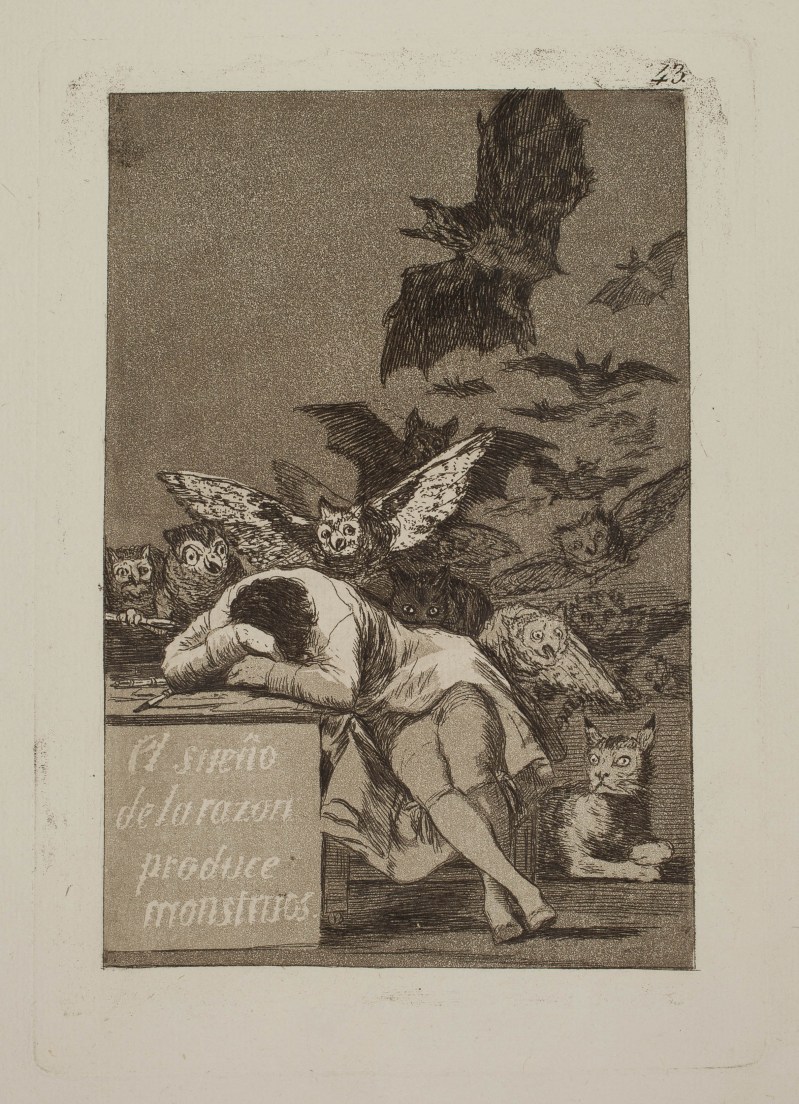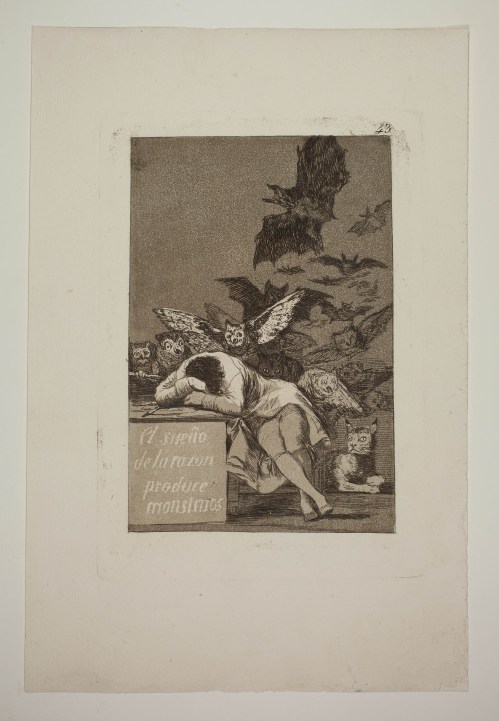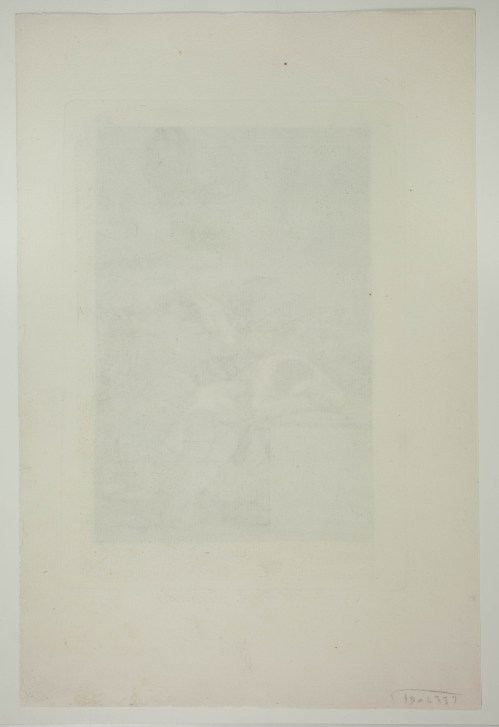Francisco de GOYA: El sueño de la razon produce monstruos - 1797/99
SOLD
[The sleep of reason produces monsters] 43rd plate from Goya's series of 80 aquatint etchings Los Caprichos [The Caprices].
Etching and aquatint, 217 x 150 mm. Harris 78, 3rd state (of 3), 1st edition (of 12).
Impression of the first edition, the only one to be printed on laid paper from the unbeveled plate. This first edition, of which approximately 300 copies were printed in 1799, is the only edition printed while Goya was still alive. The second edition was printed in 1855.
Superb impression with all shades of aquatints perfectly printed, the title of the plate clearly legible. Impression printed in dark sepia ink on laid paper. Generally in very good condition. A few very tiny repaired losses of paper along the right border of the sheet, a few tiny pinholes on the right and bottom sheet edges; a tiny (1 mm) scratch to the right of the title. Good margins; sheet: 305 x 202 mm. According to Harris, impressions of the first edition were printed on sheets of paper whose dimensions are around 320 x 220 mm. They have very often been trimmed.
The Sleep of Reason is the most famous plate in the Caprices series. It stands out in this series: Goya had first wanted to use it as a title page.
A preparatory drawing in the collection of the Prado in Madrid has the title Sueno 1° [Dream n°1]. Goya added a title in pencil, Ydioma univer / sal Dibujado/ y grabado p.r / Fran.co de Goya/ año 1797 [Language univer / sal Drawn / and engraved by / Francisco de Goya / in the year 1797], as well as indications on how to interpret the Caprices: El Autor Soñando. / Su yntento solo es desterrar bulgaridades perjudiciales, y perpetuar con esta obra de caprichos el testimonio solido de la verdad. [The author, asleep. / His only aim is to drive away harmful superstitions and to perpetuate, through this volume of caprices, the firm testimonial of truth].
In another sketch, also in the Prado Museum, two self-portraits of Goya are among the visions swarming around the sleeper: they encourage the interpretation in which the “sleeping author” would be Goya himself. An inscription attributed to Goya figures opposite the etching in the Manuscript at the Prado Museum and explains how imagination and reason play complementary parts in creation: “La fantasía abandonada de la razón produce monstruos imposibles: unida con ella es madre de las artes y origen de las maravillas” [Imagination without reason produces impossible monsters : united with reason, imagination is the mother of the arts and the origin of marvels].
In the end, Goya decided to make this the first plate of the second part of the Caprices. According to Tomás Harris, the Caprices are thus divided into two parts: the first one, comprised of all the etchings before the Sleep of Reason, is a satire of Man's madness and cruelty in the society of Goya's time. The second part, beginning with plate 43, is more specifically a depiction of the Dreams, that is, diabolical and fantastical visions, the goal of which is to “drive away harmful superstitions.”





